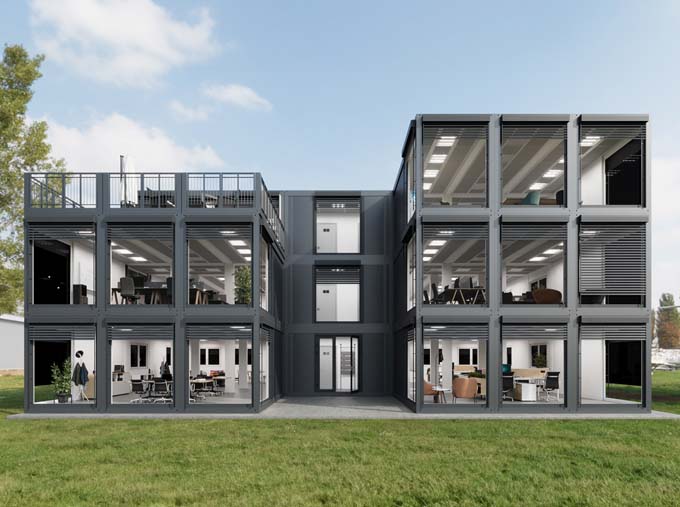Renewable resource: wood concrete
Researchers of the National Research Program 66 have developed a wood concrete that consists largely of wood. The building material offers new possibilities for the construction industry and is also based heavily on regionally renewable resources.

What exactly is wood concrete? Houses are either built from wood, as in the past - or from concrete, as today. To build for tomorrow, people are now combining the two construction methods: Such hybrid buildings, combining wood and concrete elements, make sense.
National Research Program
As part of the National Research Program "Resource Wood" (NRP 66), Swiss researchers have now developed an even more radical approach to merging wood and concrete: They are producing a load-bearing concrete that itself consists largely of wood - in some mixtures, the wood has a volume share of over 50 percent.
Cement-bonded wood products have been around for over 100 years. However, until now they have only been used for non-load-bearing purposes, such as insulation. Daia Zwicky, head of the Institute for Construction and Environmental Technologies at the Fribourg School of Engineering and Architecture, wondered whether the time was not ripe for a more ambitious use of "wood concrete".
Floating concrete
With his team, he tried out the proportion and granularity of the wood as well as various additives and then subjected the various mixtures to rigorous testing. The main difference to classic concrete: the gravel and sand content is replaced by finely ground wood. Put simply, sawdust is mixed into the cement instead of small stones. Thanks to the high wood content, the novel building materials have good fire protection and contribute to thermal insulation.
"They weigh no more than half of normal concrete - the lightest ones even float!" says Zwicky. They are also heavily based on renewable resources and can be reused in heat and power generation after demolition. The wood content can be burned out in waste incineration, while still meeting all fire safety standards in everyday use.
Initial load tests on a scale of 1:1 show that the new type of wood concrete can also be used in ceiling and wall elements and can assume a load-bearing function in the structure. The process is suitable for precast elements. It is primarily in this area that the Freiburg team would like to deepen its expertise with further test series.
The researchers want to find out which composition of lightweight wood concrete is optimal for which application and how it can be produced efficiently. "A few years will probably pass before the first buildings are built in which lightweight wood concrete literally plays a load-bearing role," says Zwicky. "The knowledge for practical application on a large scale is still too limited."
More about the research program of the Institute for Construction and Environmental Technologies iTEC HES-SO Fribourg School of Engineering and Architecture can be found at:









